Life Imitates Art
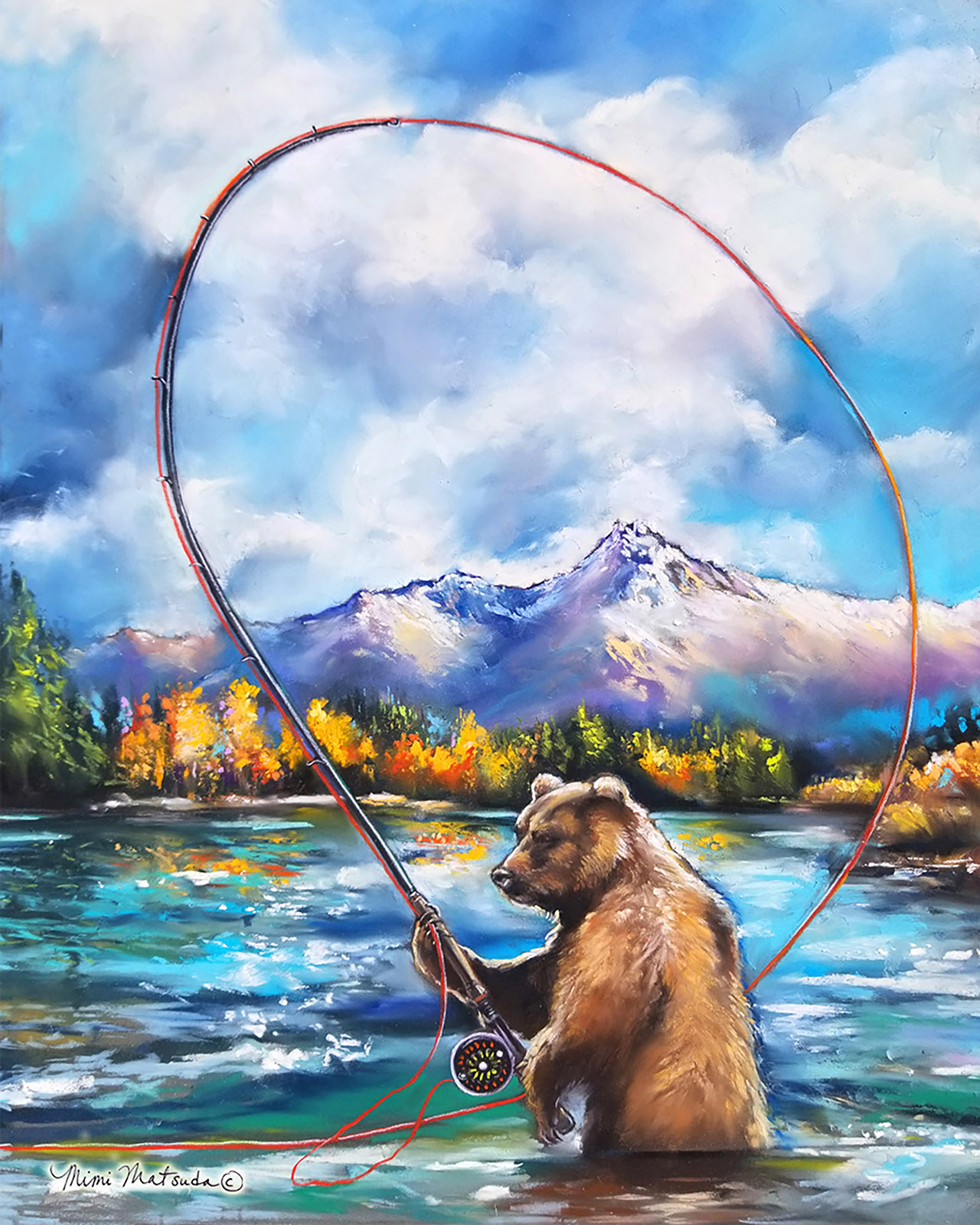
by Jamie Rankin
Sitting down with Montana artist Mimi Matsuda.
Spend enough time on a Montana river, and you’re bound to see a Mimi Matsuda painting unfold before you—a trout rising in a perfect bend, a heron perched on a rock, a fleeting fox. Former park ranger turned full-time artist, Mimi captures wild moments with a mix of reverence and playful imagination. Her work brings the natural world to life—sometimes just as it is, other times with a twist: ravens on cruiser bikes, bears looking through binoculars, an eagle rowing a driftboat, an elk mountain biking. Recently, I had the opportunity to catch up with Mimi and learn about her journey into the arts.
MFFM: When did you first start making art? Were there other artists in your family?
Mimi Matsuda: My mom was an elementary-school art teacher, so I grew up exposed to lots of different projects and had the freedom to make a mess. My great grandfather was a commercial illustrator in New England, and my grandfather was an architect in Japan. Both of my grandfathers were entrepreneurs, and they incorporated the work ethic and discipline necessary for running a business into my family and upbringing.
We spent lots of time outside, which gave me a natural inclination toward animals, woods, streams, mountains, etc. I pursued science in high school and throughout college, but I always incorporated drawings and paintings of the subjects I was studying into my reports and project work.
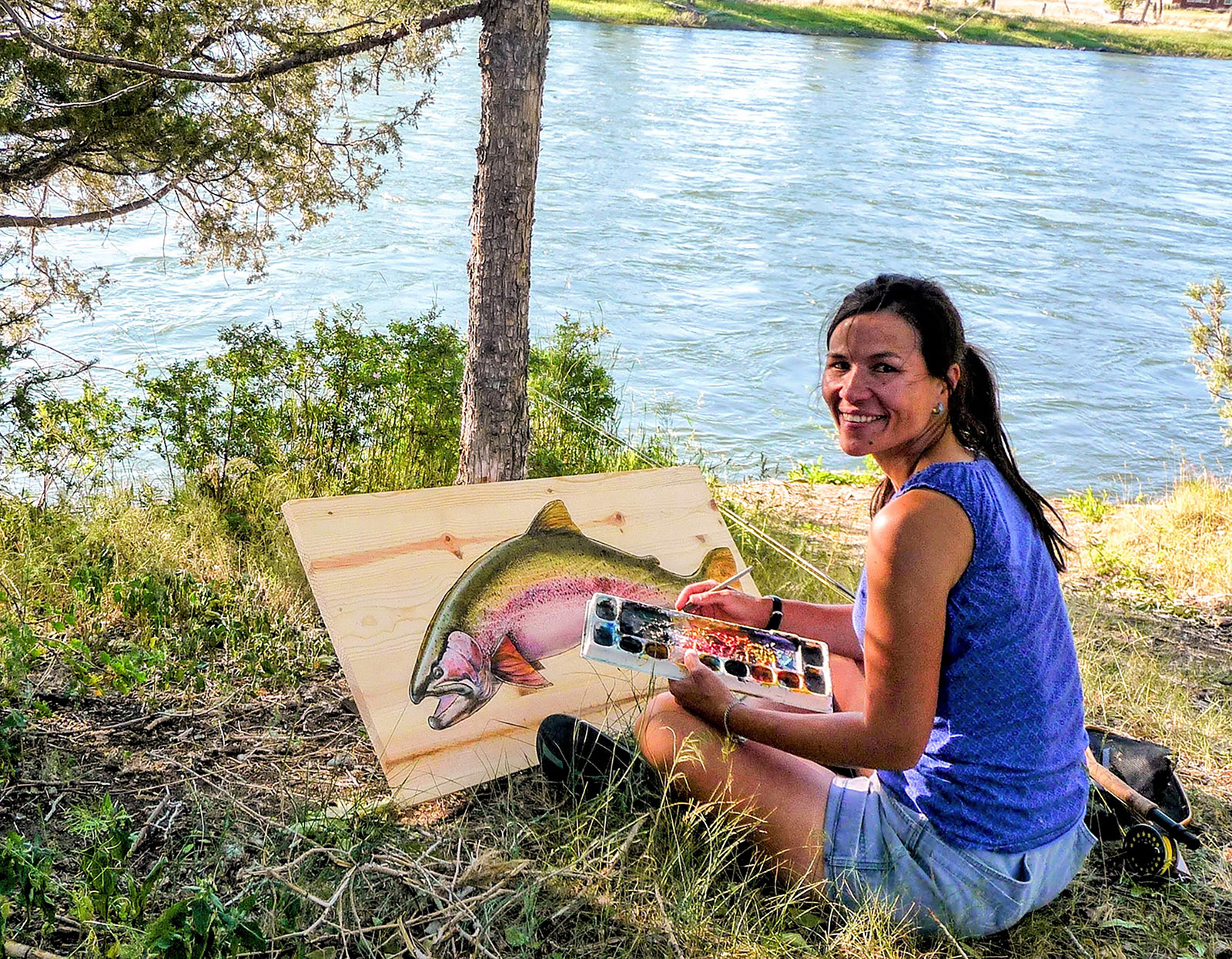
What motivated you to pursue art as a career?
MM: After I graduated from Portland State University in Oregon, I drove out to Yellowstone for a summer internship with the Fisheries and Aquatic Resources division. I began teaching about the Park’s wildlife, lands, history, and news as a National Park Ranger Naturalist based out of the Fishing Bridge Visitor Center. I spent a decade working the summer seasons there, and I’d spend the off-season working on my art career. My degree was in science, and my work background was in teaching and unraveling the stories of the Park for groups of all ages from around the world. I would use hand-drawn posters to illustrate the concepts I was teaching, such as the formation of mud pots or the life cycle of the Yellowstone cutthroat. It helped me to hone my craft and create eye-catching, attention-holding works of art.
In 2009, I moved to Bozeman to establish my art business. Everyone here has been so incredibly supportive, and I’m grateful for the local businesses, festivals, magazines, and friendships that have helped me to succeed along the way. I’ve very fortunate to have been able to follow my dreams of becoming a national-park naturalist and a professional artist.
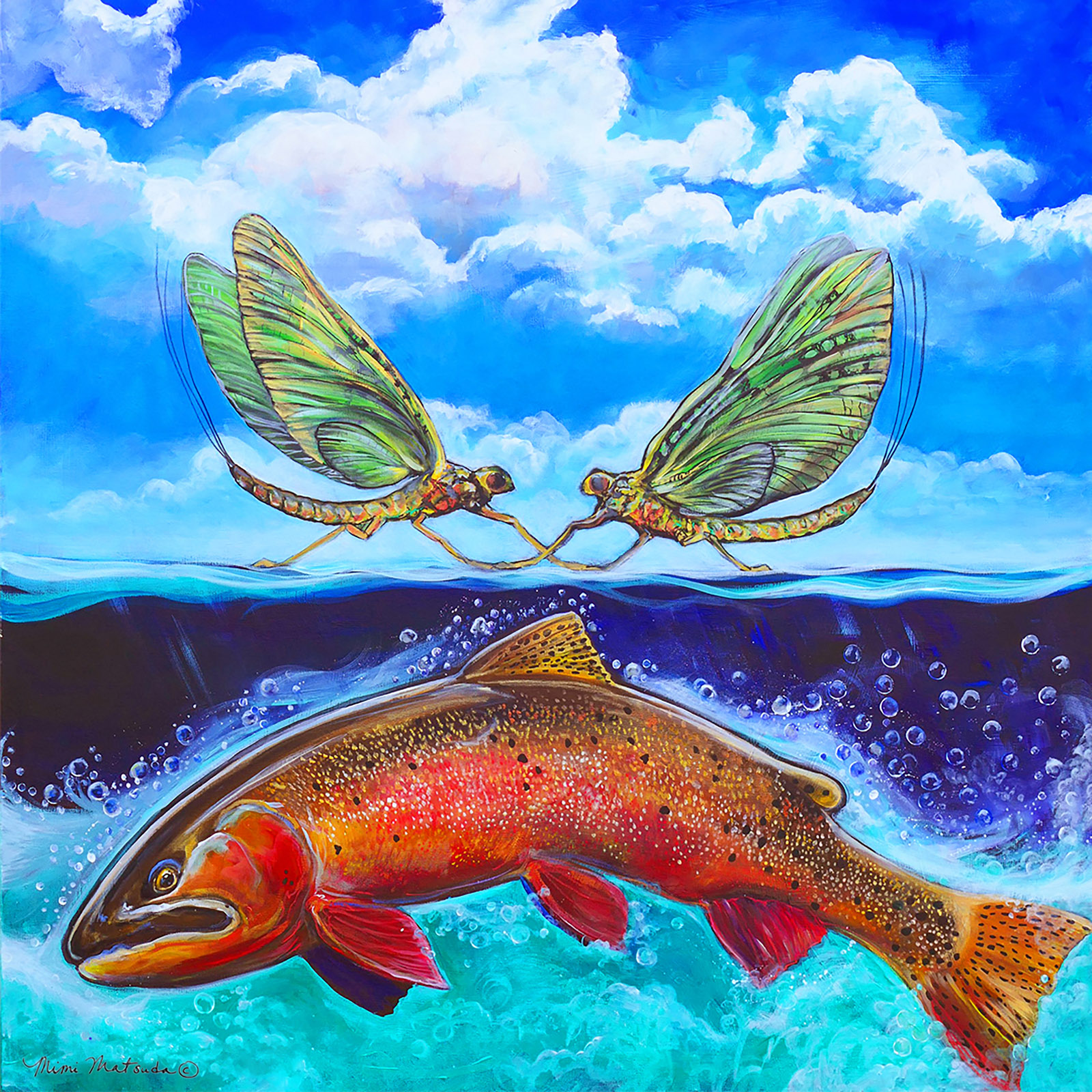
What brought you to Montana, what made you stay?
MM: I knew I needed to be close to the national parks—and my home in Oregon—so Bozeman was the best fit. This place has some incredible doers: people who are paving the way in environmental advocacy while operating businesses. The Greater Yellowstone Ecosystem has been my greatest inspiration—there isn’t a better place, and I hope everyone understands how precious and finite it is. I could spend a lifetime painting the stories of the land and wildlife here. The hand-rendered visual image is so important. I think about the early painters like Thomas Moran and Albert Bierstadt who painted to urge the government to preserve these unequaled lands. By painting the wildlife and landscapes of the region, I hope that I too can help people understand how priceless they are.
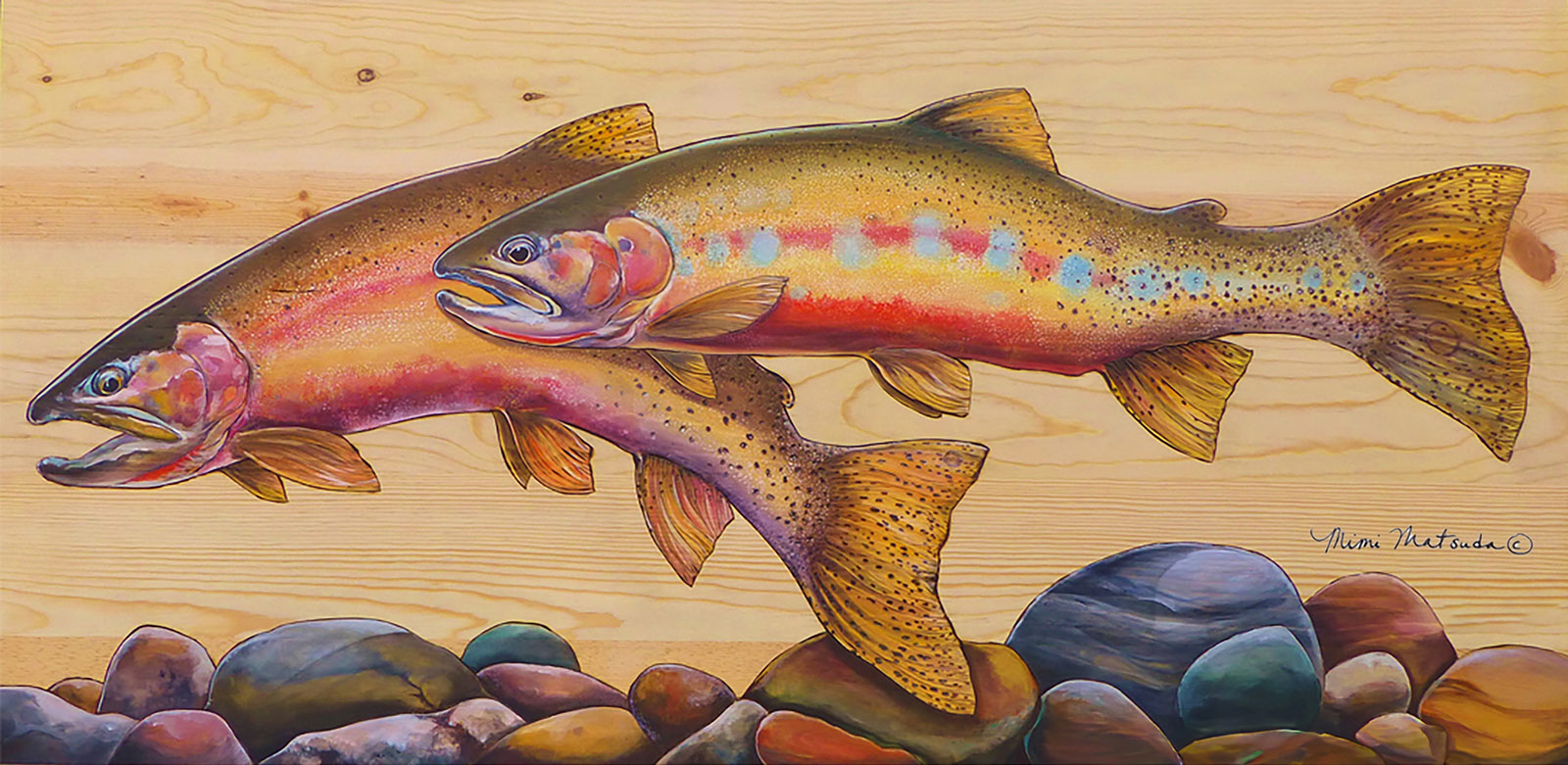
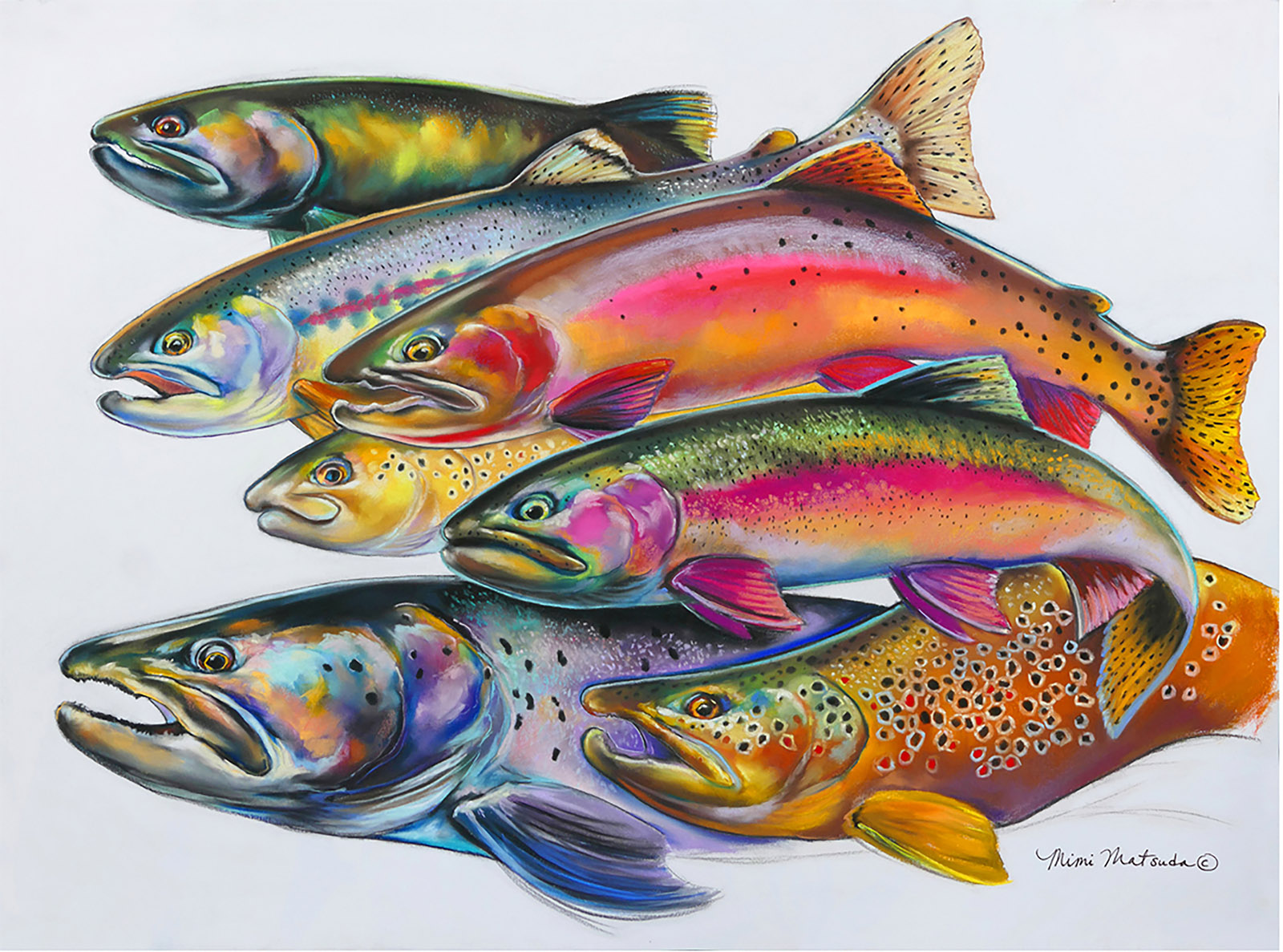
What first inspired you to paint fish?
MM: I grew up fishing and swimming in clear, cold creeks with my snorkel and mask, catching crayfish, and exploring the high-mountain streams and waterbodies of Oregon with my dad. When I was at Portland State, my biology professor encouraged me to illustrate the anatomies and habitats of the species we were studying.
But it was my immersion in Yellowstone fisheries and aquatics work really set me in motion. I was fueled and inspired by the time I spent in the Park and the friendships I cultivated with Park staff: fishing legends like Craig & Jackie Mathews, Arrick Swanson, and the fine folks at the Trout Hunter, Dan Bailey’s, and Big Sky Anglers. Their support and positivity is what got me off the ground.
Do you draw inspiration from specific fishing trips or wildlife encounters?
MM: Yes! Any time spent away from electronics, soaking up the real, natural world is the best. When I graduated, my parents gave me a four-piece fly rod—which I still treasure—and I was determined to put it to good use. Back in the day, my friends and I would explore the backcountry, fly rods in hand, catching beautiful trophy trout and enjoying the countless sunrises, sunsets, and chance encounters spotting grizzlies, wolves, otters, and beavers. That’s when my brain starts making the “to-paint” list.
Most recently, I painted a special piece to honor the historic fly-fishing culture in West Yellowstone and their Wretched Mess Festival. I have a grizzly bear behind the vise, tying a Royal Wulff, with cubs watching. It’s stylized like the early Union Pacific Railroad art from the 1920s depicting Yellowstone bears at play. Each detail—from the favorite flies of local legends on the table to a Lego fisherman in one of the cub’s paws (inspired by Joe Moore of Big Sky Anglers)—was added with care and draws inspiration from local spots, old stories, and the ambience of the fly-fishing culture in West.
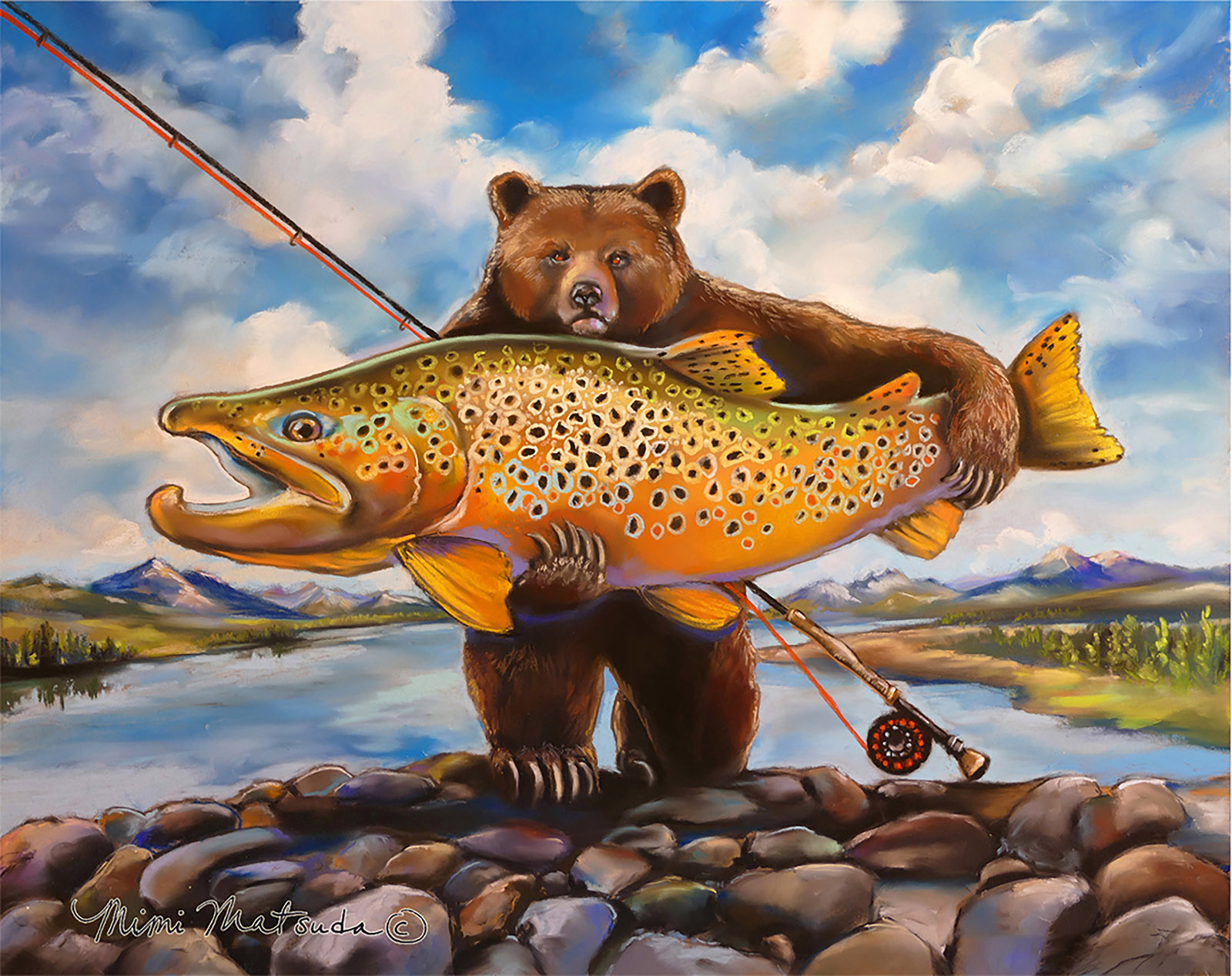
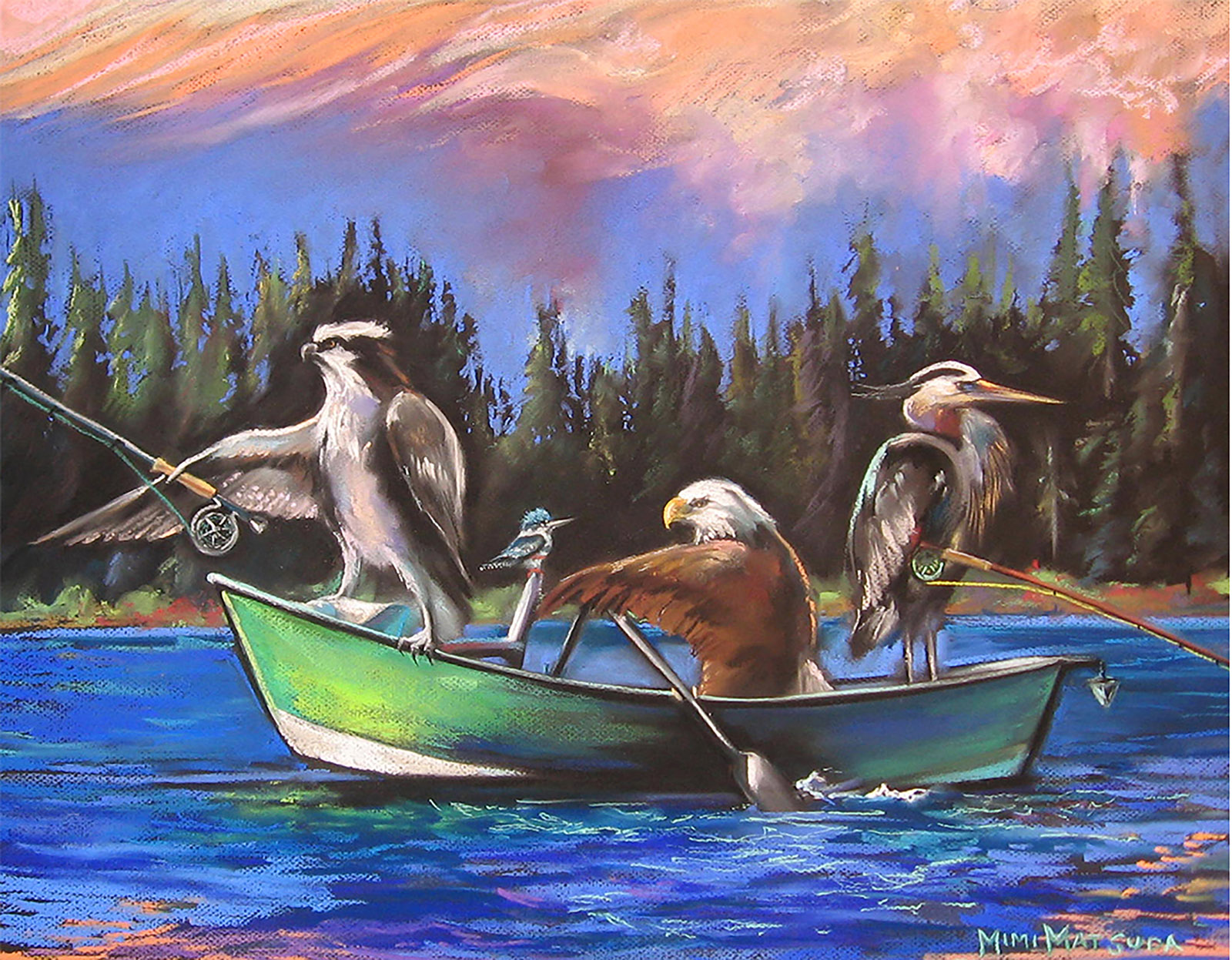
Do you have a favorite fishing story that found its way into your paintings?
MM: Every painting has a story and a meaning, but I have two favorites. “Big Browns” has a double meaning; it comes from the fall hiking & fishing trips we would take into the southern part of Yellowstone, where we were always on the lookout for big grizzlies and big brown trout. Plus, that feeling of catching a big, beautiful brown makes you feel like an apex predator. “Birds of a Feather” comes from a great fishing trip to an Oregon lake with my old friend, Matt Klara. Each angler in the boat that day became a character in the painting.
